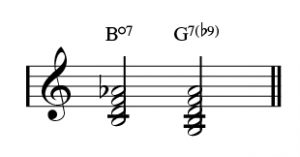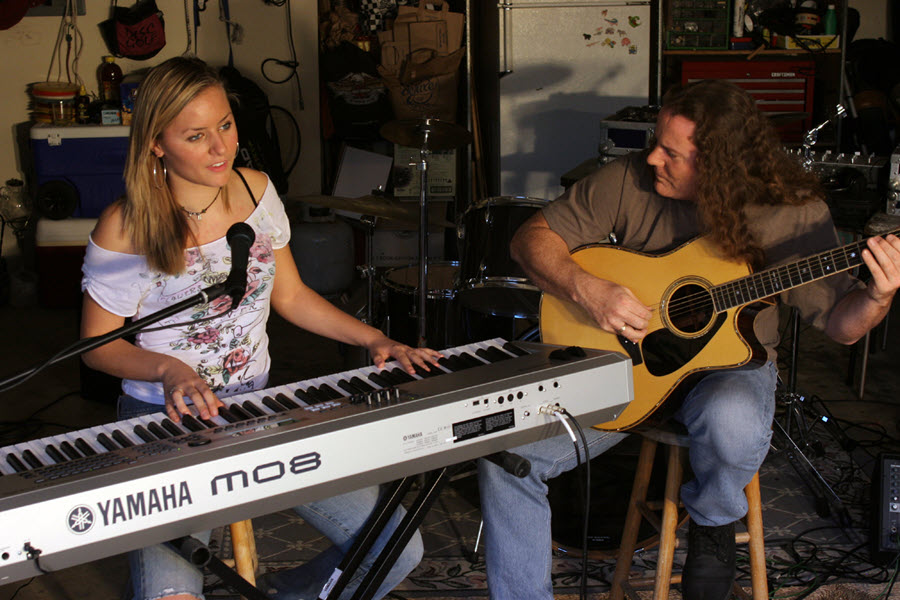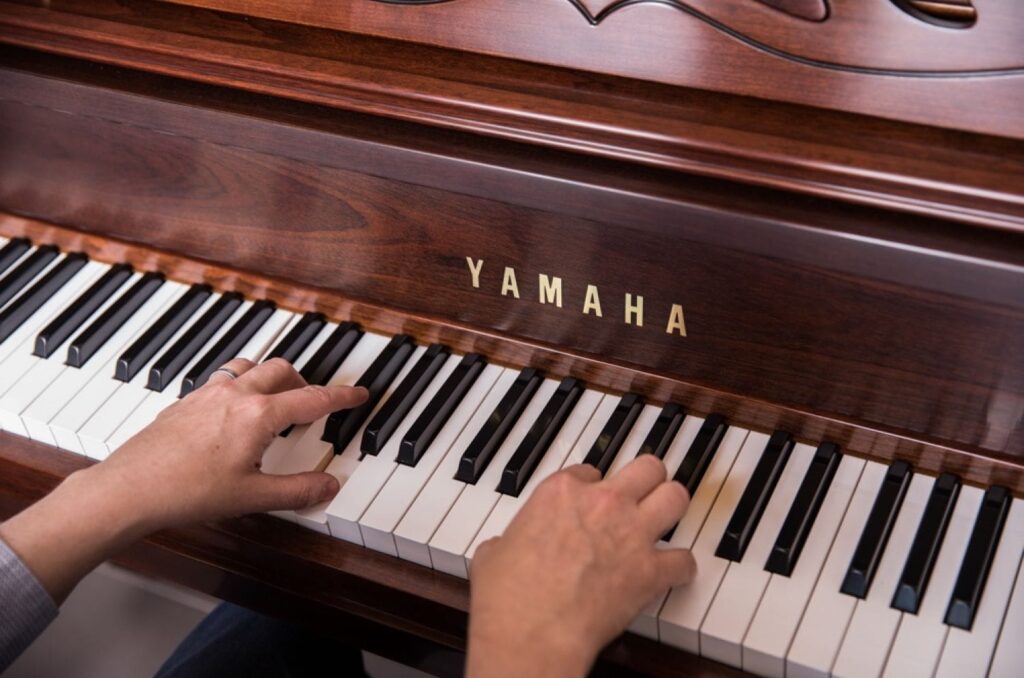Tagged Under:
Reharmonizing Songs, Part 1
Adding alternate harmony to a song is a great way to make it your own.
Throughout various “Well-Rounded Keyboardist” postings I’ve presented ideas about functional harmony and passing chords that can be used to add color and sophistication to your playing. Let’s pull all that together with some additional concepts to expand your chordal vocabulary.
A Quick Review
The most important concept of functional harmony is based on the “pull” of a dominant-seventh chord wanting to resolve, since it occurs as a V7 chord in a key and wants to resolve back to its root (the I chord).

This same harmonic “pull” occurs in minor keys as well:

We can use this harmonic “expectation” to set up any chord by preceding it with a Dominant seventh chord a fifth higher than it. This example takes each scale-tone chord and does just that, with a little added melodic movement for color:

There is another chord type that offers the same type of expected resolution: the diminished-seventh chord, found on the seventh step of the Harmonic minor scale chords. This chord can resolve back equally well into a minor or major chord.


Listening to this sound, it is very close to a V7 chord with an added flat-ninth: it shares all the upper notes of that chord without the bass note:
We can use diminished chords to set up each of the scale tone chords like this:


In Part 2 of my “Functional Harmony” blog, we discussed the common chord progression called the ii – V – I, which makes up an important part of the jazz harmonic vocabulary, and has been used for countless open-ended jams:

Note: In bars 3 – 4, I play a comping figure for soloing on a ii – V progression. Countless rock and jam bands have been known to play for hours on this!

We’ve also discussed the idea of using scale tone chords as passing chords between two existing chords in a progression, as in this example, where a G triad is used to connect between a C and an A minor chord:
There’s no rule that says a chord can only be played over its root tone — as you can see from the above example, I put the G over its 3rd, the B note. Using the 3rd, or the 5th, or even the 7th is a great way to keep the bass line moving in step-wise motion, rather than always jumping around to the root notes.
Putting It All To Use
Armed with this vocabulary of harmonic devices, you can start taking a song and making it more your own by adding some simple reharmonizations. For example, here’s a common four-chord progression with a basic melody:


Using some simple chord voicings, you might play it like this:
Now let’s add some Dominant 7th chords to set up a few of the existing chords:

In the first bar, I added the C Dominant 7th to set up the F major chord in bar 2. Notice how I labeled it as a V7 of IV (“V7/IV”) to show how it functions in relationship to the F chord. Similarly, I added the E Dominant 7th in bar 2 to set up the coming A minor, and the D Dominant 9th to set up the G chord in bar 4. While these all work, it’s generally more effective to mix up the approaches to adding more harmony instead of using only one device over and over.

That brings us to this example:
Here, I still use the C Dominant to set up the F, but I play the 3rd of the chord in the bass for some movement, and added the 9th tone to my voicing. To set up the A minor in bar 3, I preceded it with the G-sharp diminished chord for a different color, along with a nice bass line climb. Then, thinking of how to travel to the G chord, I decided to move my bass line back downward and added some extra chords, delaying the arrival to the G. So the C triad over the G is a good scale tone chord choice, and on the way to the F6 (also a scale tone chord) I slipped in a little bit of chromaticism with the F-sharp half-diminished chord (F-sharp minor 7th with a flatted 5th). I chose that chord quality because, other than the F-sharp note, all the other notes come from the scale of C major.
This next version starts by using the concept of the ii – V chord to set up the F, so we have a G minor 7th that also needs to include the melody note, which is the 4th, or the 11th of the chord (we call it the 11th since there already is a 7th in the voicing):

The melody makes the C Dominant 7th a 9th chord, and then for the F chord I added a 2nd to the voicing for a nice color, continuing the sophistication of the preceding chords. I also decided I wanted the bass to climb up to the A minor, so I got fancy and used the D Dominant 7th to precede the G bass note so that neither chord is using roots for the bass notes. This sound is used often in gospel and church hymnal music, and should sound familiar to your ears. Finally, I set up the G chord with its V7 (D-Dominant 7th) and used a colorful suspended 4th to 3rd resolution for the G to keep the harmony moving a bit.
This next approach explores the use of mostly scale-tone chords, with an ascending bass line up through the whole C scale:

The only non-scale color is the F-sharp, which I again use to climb into the G, but this time I use that F-sharp half-diminished chord to climb into the C with the G in the bass.
Next up is another approach based on bass line movement, but this time we’re going to descend, and go further outside of the scale tone choices.

The second chord in bar 1 is the C Dominant 7th, which wants to resolve to the F chord, but the voicing is fancier, putting the flatted 7th in the bass, and resolving into the 3rd of the F chord. Then I slip chromatically through an A-flat (making the F chord a minor) to get to that same C over G in the bass. Just as I did two examples ago, I then use the F-sharp half-diminished to go into the F, but that is followed by two scale-tone chords, with nice color from the melody notes making them minor 11th voicings. My reason for doing so was to balance out the more elaborate travels away from the key center in the first half of the progression.
Finally, let’s wrap things up with this decidedly jazzy approach:

This whole example makes use of the concept of tri-tone substitutions for the usual Dominant 7th chords that would be normally be employed to set up each chord in the original progression. (See the “Let’s Get Fancy” section at the end of that blog for further explanation). The “fancy” F-sharp Dominant chord is a substitute for the usual C Dominant 7th, just as the B-flat Dominant is a substitute for the usual E Dominant. And the A-flat Dominant acts in place of a D Dominant to set up the G in the last bar. To change up the movement, I climb up from the G to head back to the inevitable C (the I chord); this also serves to make the chord choices a bit more interesting.
We covered a lot of ground here — all of it based on functional harmonic ideas. Click here for Part 2, where we go into some more advanced territory.
All audio played on a Yamaha P-515.
Check out our other Well-Rounded Keyboardist postings.
Click here for more information about Yamaha keyboard instruments.














